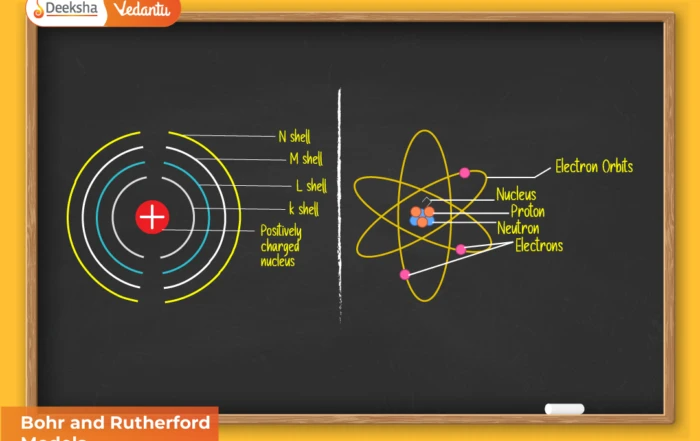
Introduction
Mathematics is not only about equalities. Real-world situations often involve constraints – for example:
- A person’s monthly expense must be less than their salary.
- A box can carry at most 10 kg of weight.
- The speed of a vehicle must be greater than 40 km/h to join a highway.
All these situations can be modeled using inequalities. Unlike equations, which give one or a finite number of solutions, inequalities usually provide ranges of solutions.
This section deals with algebraic solutions of linear inequalities in one variable and their graphical representation. By the end, you should be able to:
- Solve inequalities step by step.
- Represent solutions graphically on a number line.
- Understand interval notation.
- Apply inequalities to real-life and exam-type problems.
Definition
A linear inequality in one variable is an expression that shows a relationship of order between two algebraic expressions.
The standard forms are:
- ax + b < c
- ax + b > c
- ax + b ≤ c
- ax + b ≥ c
where a, b, c ∈ R and a ≠ 0.
The solution is always a set of values of x that satisfies the inequality, and these values are represented as intervals.
Rules for Solving Linear Inequalities
When solving inequalities, we perform operations similar to equations, but must be cautious:
Rule 1: Addition and Subtraction
If a < b, then:
- a + c < b + c
- a – c < b – c
✅ Example: If x < 5, then x + 2 < 7.
Rule 2: Multiplication/Division by a Positive Number
If a < b and c > 0, then ac < bc.
✅ Example: If x < 3, then 2x < 6.
Rule 3: Multiplication/Division by a Negative Number
If a < b and c < 0, then ac > bc (the inequality reverses).
✅ Example: If x < 4, then -x > -4.
Rule 4: Transitive Property
If a < b and b < c, then a < c.
Rule 5: Substitution
If an inequality holds for all real numbers in an interval, substituting any value from that interval keeps it valid.
Step-by-Step Method
- Simplify both sides (expand brackets, remove fractions).
- Isolate the variable.
- Adjust inequality sign if dividing/multiplying by negative.
- Write a solution set in interval notation.
- Represent on a number line.
Graphical Representation
Solutions are often best visualized on a number line.
- x > a → open circle at a, shade right.
- x ≥ a → closed circle at a, shade right.
- x < a → open circle at a, shade left.
- x ≤ a → closed circle at a, shade left.
- a < x < b → open circles at a and b, shade between.
- a ≤ x ≤ b → closed circles at a and b, shade between.
This provides an instant understanding of all possible values of the variable.
Expanded Solved Examples
Example 1: Simple Linear Inequality
Solve: 3x – 5 < 7.
Solution:
3x < 12 → x < 4.
Graph: Open circle at 4, shade left.
Example 2: Negative Coefficient
Solve: 2 – 4x ≥ -6.
Solution:
-4x ≥ -8 → x ≤ 2 (sign reverses).
Graph: Closed circle at 2, shade left.
Example 3: Absolute Value Inequality
Solve: |2x – 1| < 3.
Solution:
Break into two inequalities:
- 2x – 1 < 3 → x < 2.
- 2x – 1 > -3 → x > -1.
So: -1 < x < 2.
Graph: Open circles at -1 and 2, shaded between.
Example 4: Rational Inequality (Competitive Exam Type)
Solve: (x – 2)/(x + 1) ≥ 0.
Solution:
Critical points: -1 (denominator 0), 2 (numerator 0).
Test intervals:
- (-∞, -1): fraction positive → valid.
- (-1, 2): fraction negative → not valid.
- (2, ∞): fraction positive → valid.
Final solution: (-∞, -1) U [2, ∞).
Example 5: Quadratic Inequality (JEE level)
Solve: 2x² – 5x + 2 ≥ 0.
Solution:
Factor: (2x – 1)(x – 2) ≥ 0.
Critical points: x = 1/2, x = 2.
Test intervals:
- (-∞, 1/2] → valid.
- (1/2, 2) → invalid.
- [2, ∞) → valid.
Solution: (-∞, 1/2] U [2, ∞).
Example 6: Word Problem
A car rental company charges a minimum of Rs. 500 and an additional Rs. 20 per kilometer. If a customer can spend at most Rs. 1000, how many kilometers can they travel?
Solution:
Cost = 500 + 20x ≤ 1000 → 20x ≤ 500 → x ≤ 25.
So, a maximum of 25 km.
Interval Notation Table
| Inequality | Interval Form |
| x > a | (a, ∞) |
| x ≥ a | [a, ∞) |
| x < a | (-∞, a) |
| x ≤ a | (-∞, a] |
| a < x < b | (a, b) |
| a ≤ x ≤ b | [a, b] |
Advanced Applications
In JEE Exams
- Problems often involve quadratic inequalities.
- Domain restrictions of functions.
- Absolute value inequalities.
In KCET/COMEDK
- Quick one-step inequalities.
- Rational function inequalities.
- Interval-based multiple-choice questions.
In Real-Life Contexts
- Budgeting (expenses ≤ income).
- Time constraints in projects.
- Capacity problems (load ≤ limit).
Common Mistakes to Avoid
- Forgetting to flip inequality signs when multiplying/dividing by negative.
- Including values where the denominator becomes zero.
- Misinterpreting open vs closed circles in graphs.
- Missing multiple intervals in rational/quadratic inequalities.
Exam Weightage
- CBSE Boards: 3–4 marks (direct problem).
- JEE Main/Advanced: 1–2 questions (4 marks each), often quadratic/absolute value type.
- KCET/COMEDK: Multiple 1-mark questions, usually interval checking.
Practice Problems
- Solve: 4x + 3 ≥ 11.
- Solve: -2x + 7 < 1.
- Solve: |x + 2| > 5.
- Solve: (3x – 1)/(x – 2) < 0.
- Solve: x² – 3x + 2 ≤ 0.
- If income ≥ 20000 and expenses ≤ 15000, represent savings ≥ 5000.
- Solve: (x² – 1)/(x – 3) ≤ 0.
- Solve: |x – 3| + |x + 1| ≥ 6.
FAQs
Q1. Why do we reverse the sign when dividing by a negative?
Because multiplying by a negative reverses order on the number line.
Q2. Can inequality solutions be infinite?
Yes, most inequalities represent infinite solution sets (intervals).
Q3. How do I know if my solution is correct?
Test values from each interval in the original inequality.
Q4. Which is harder – linear or quadratic inequalities?
Quadratic and rational inequalities are more exam-relevant and require careful interval testing.
Q5. How do I quickly solve exams?
Memorize standard patterns, draw quick number line sketches, and always check domain restrictions.
Summary
- A linear inequality in one variable defines a range of values rather than a single solution.
- Rules of solving are similar to equations, except for the sign reversal when multiplying/dividing by a negative.
- Solutions are expressed in interval notation and represented graphically on a number line.
- In competitive exams, inequalities appear as linear, quadratic, absolute value, or rational inequalities.
- This topic is crucial for optimization, linear programming, and function domain/range problems.











Get Social